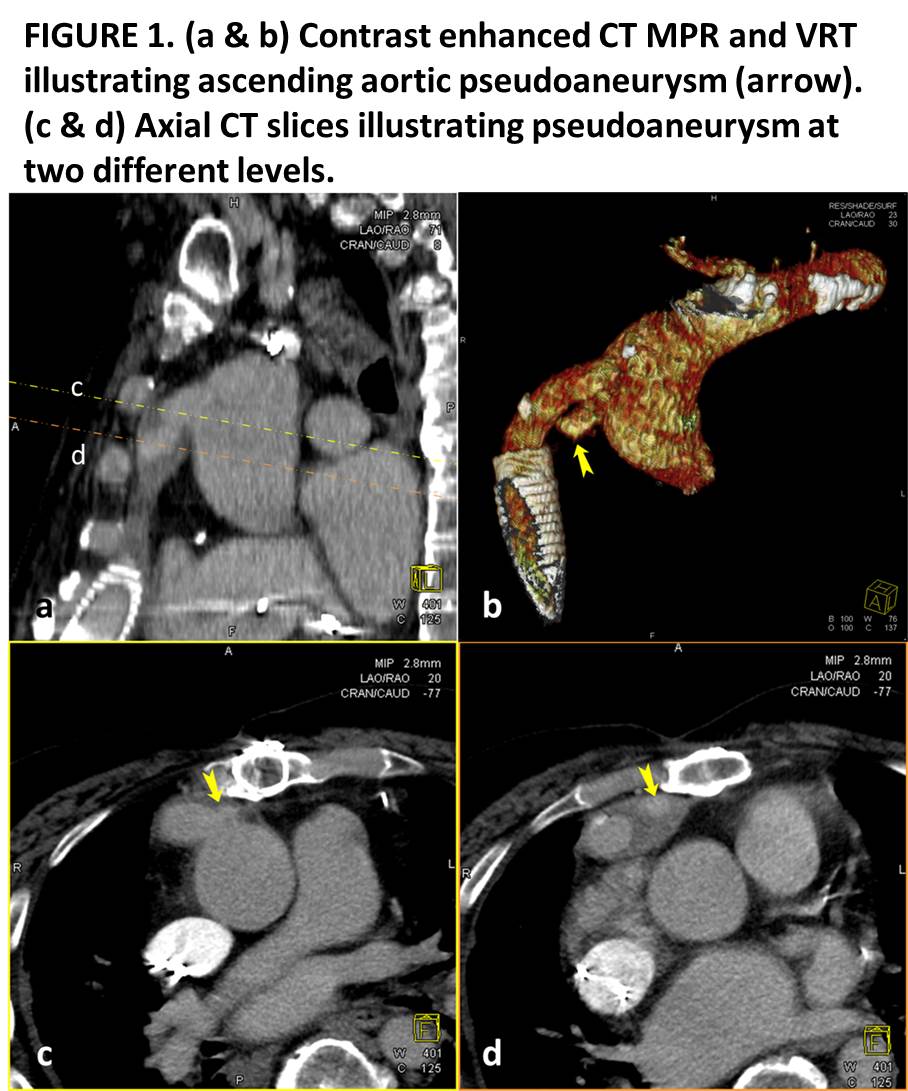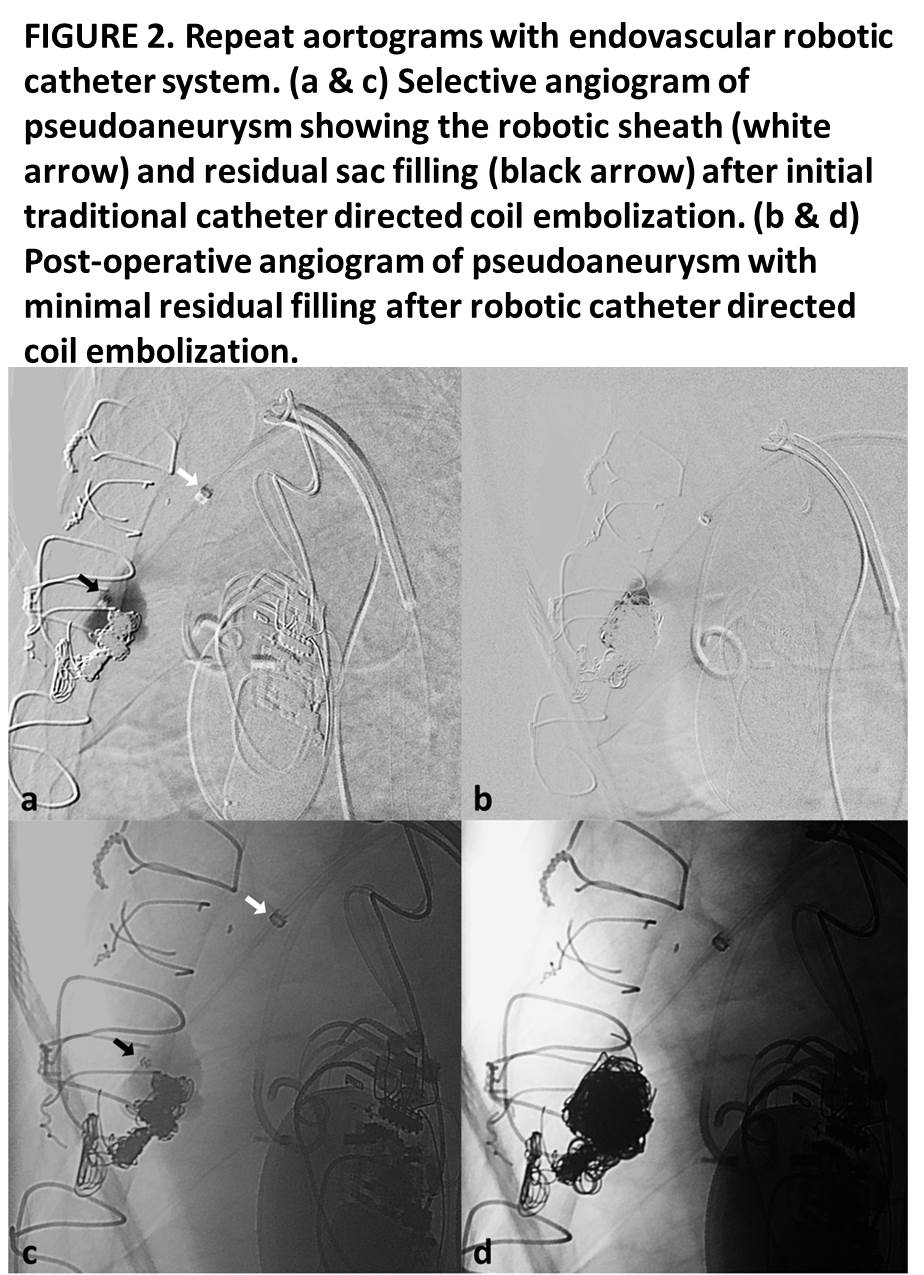Back to 2016 Annual Symposium ePosters
Robotic Assisted Coil Embolization of Ascending Aortic Pseudoaneurysm: A Case Report
Tony Lu, MD, Shayan Owji, Ponraj Chinnadurai, MBBS, MMST, Thomas M. Loh, MD, Alan B. Lumsden, MD, Jean Bismuth, MD.
Houston Methodist Hospital, Houston, TX, USA.
OBJECTIVES:
Endovascular therapies offer a minimally invasive approach to management various vascular pathologies. Remotely steerable catheters expand the repertoire of existing platforms for delivery of these therapies.
METHODS/RESULTS:
This is a case report of a 62 year old Caucasian male with a history of coronary artery disease and ischemic cardiomyopathy status post prior coronary artery bypass grafting and insertion of a HeartMate II (Thoratec, Pleasanton, CA) Left Ventricular Assist Device (LVAD) in 2008 for a severely depressed ejection fraction of < 10%. Post-operatively, his course was complicated by a chronic driveline infection with a sternal abscess. He was treated with IV antibiotics and serial debridements but developed recurrent spontaneous bleeding from his sternal incision late 2014. CT and Dynamic MR showed an ascending aortic pseudoaneurysm. Subsequent intraoperative angiogram revealed an anomalous connection between the pseudoaneurysm and LVAD conduit. The tract was partially embolized using standard wire/catheter techniques. However, due to its acute angulation and location, we were unable to maintain stable catheter access for complete coil embolization. The patient initially improved clinically but returned the following week with repeat bleeding, albeit of a smaller volume than previously. He was taken back to the operating room and the Magellan Robotic System (Hansen Medical, Mountain View, CA), a remotely steerable catheter, was used to canalize the pseudoaneurysm and we were able to place additional coils with complete angiographic resolution of the tract. He remained clinically asymptomatic at 3 months after the intervention without additional episodes of sternal bleeding.
CONCLUSIONS:
Remotely steerable catheter systems provide stable platform and allows for the delivery of therapeutic interventions to aortic pathologies that may be difficult or impossible with standard manual techniques.
 
Back to 2016 Annual Symposium ePosters
|








